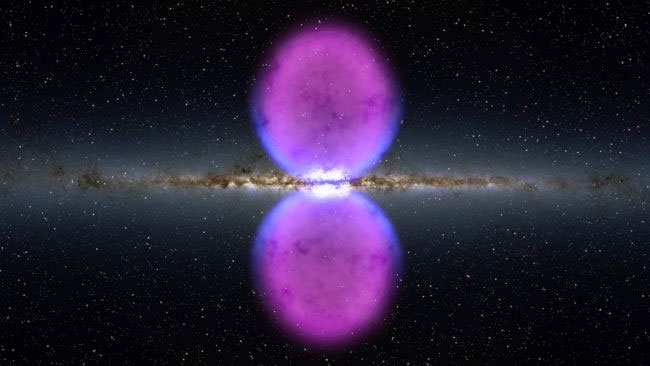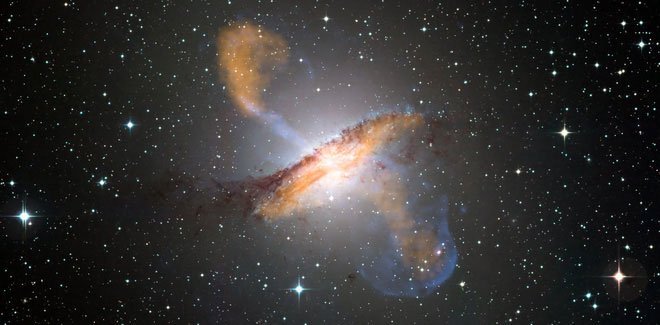The mysterious bubble that appears in the center of the Milky Way galaxy is finally 'decoded'.
In 2010, the Space Agency's Fermi Space Telescope (NASA) discovered two mysterious bubbles located in the central region of the Milky Way. They were named "Fermi Bubbles" by scientists , shaped like the wings of a giant caterpillar, or hourglass shaped. Stretching across the North and South planes of the Milky Way's center, these two giant bubbles of gas, dust and gamma rays are up to 50,000 light-years across, about half the diameter of the Milky Way galaxy.

Fermi bubble.
Notably, since the first discovery to date, Fermi Bubbles has caused astronomers around the world to "headache" due to not finding the origin of this giant gamma ray structure. However, a study just published in the Astrophysical Journal on May 14 showed that there is a link between Fermi Bubbles and the activities of supermassive black holes in the center of the band. The Milky Way 6 million years ago.
Through 3D simulation models processed on supercomputers, scientists believe that the Fermi Bubble could be born after a shock wave burst from the supermassive black hole in the middle. center, known as Sagittarius A * (or Sgr A *).
Accordingly, 6 million years ago, when the Sagittarius A black hole sucked matter into the event horizon, it spewed out two streams of high-energy radiation, which flew in the opposite direction from the galactic center with The speed is close to the speed of light.

Supermassive black holes at the center of the galaxy when "devouring" matter often emit high-energy rays in two directions.
Immediately after these intense streams of radiation were emitted, a shockwave was also created simultaneously, sweeping across the gas clouds in the central region of the galaxy. These clouds of gas, after being compressed and burned by the shockwave, will continually expand into the intergalactic space in both directions, forming the Fermi Bubble. The entire process takes about a million years, the team said.
"A shockwave was immediately created when high-energy radiation" penetrated "the cloud of gas. After about a million years, Sagittarius A * black hole stopped emitting energy rays. In 5 million years, the Fermi Bubble expanded to its present size , " the scientists said.
According to the researchers, the shockwave hypothesis explains several characteristics of the central region of the galaxy, including the extremely high temperature of the Fermi Bubble. At the same time, it also explains why the lower edges of the Fermi Bubble coincide perfectly with the X-ray structures.
- The mysterious bubble appears between the Milky Way
- Discovery of the mysterious 'galaxy wheel' near the Milky Way Milky Way
- Mysterious planets have a 'mother' from another galaxy
- The sparkling beauty of the center
- Discover an X-shaped structure in the center of the Milky Way
- The center of the Milky Way may contain thousands of black holes
- Milky Way galaxy beautiful, fanciful under the perspective of the cockpit
- Fun little-known facts about the Milky Way
- The Milky Way's black hole may have erupted a giant air bubble
- Why is our galaxy called the Milky Way?
- Panorama of the brilliant beauty of the center of the Milky Way
- You are looking at the clearest picture of the so-called
 Van Allen's belt and evidence that the Apollo 11 mission to the Moon was myth
Van Allen's belt and evidence that the Apollo 11 mission to the Moon was myth The levels of civilization in the universe (Kardashev scale)
The levels of civilization in the universe (Kardashev scale) Today Mars, the sun and the Earth are aligned
Today Mars, the sun and the Earth are aligned The Amazon owner announced a secret plan to build a space base for thousands of people
The Amazon owner announced a secret plan to build a space base for thousands of people